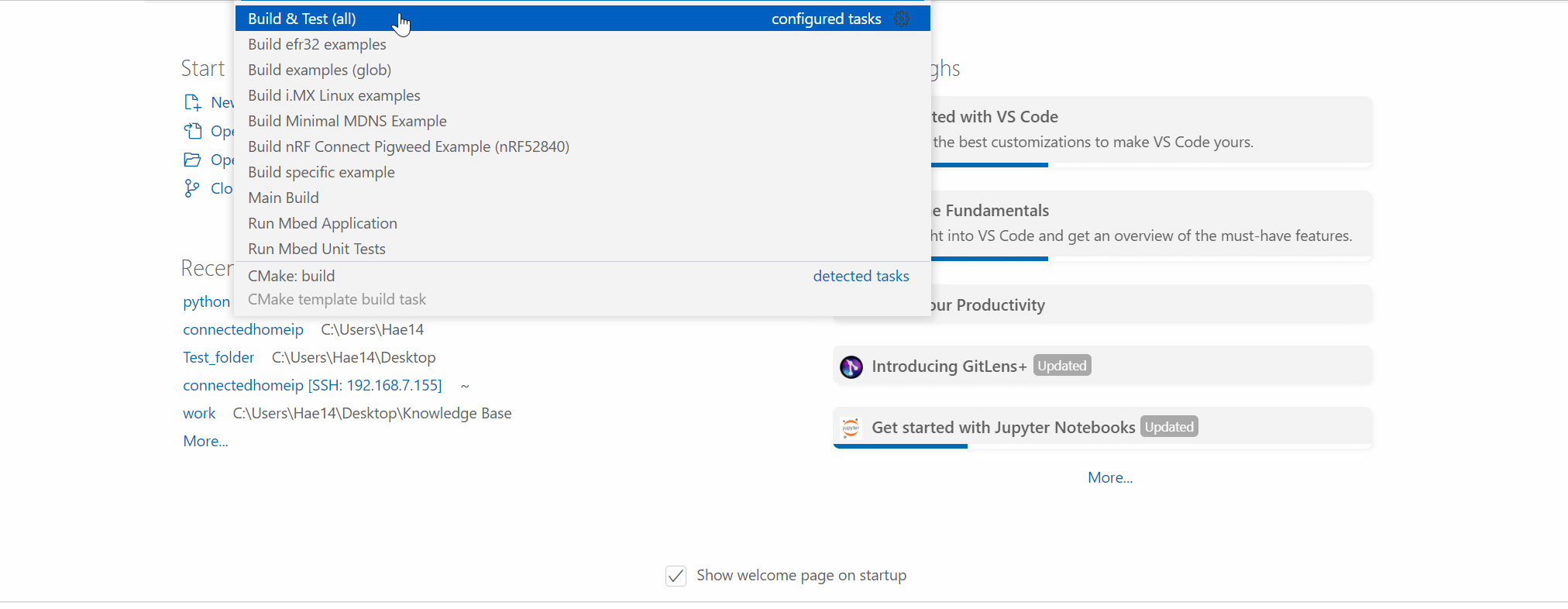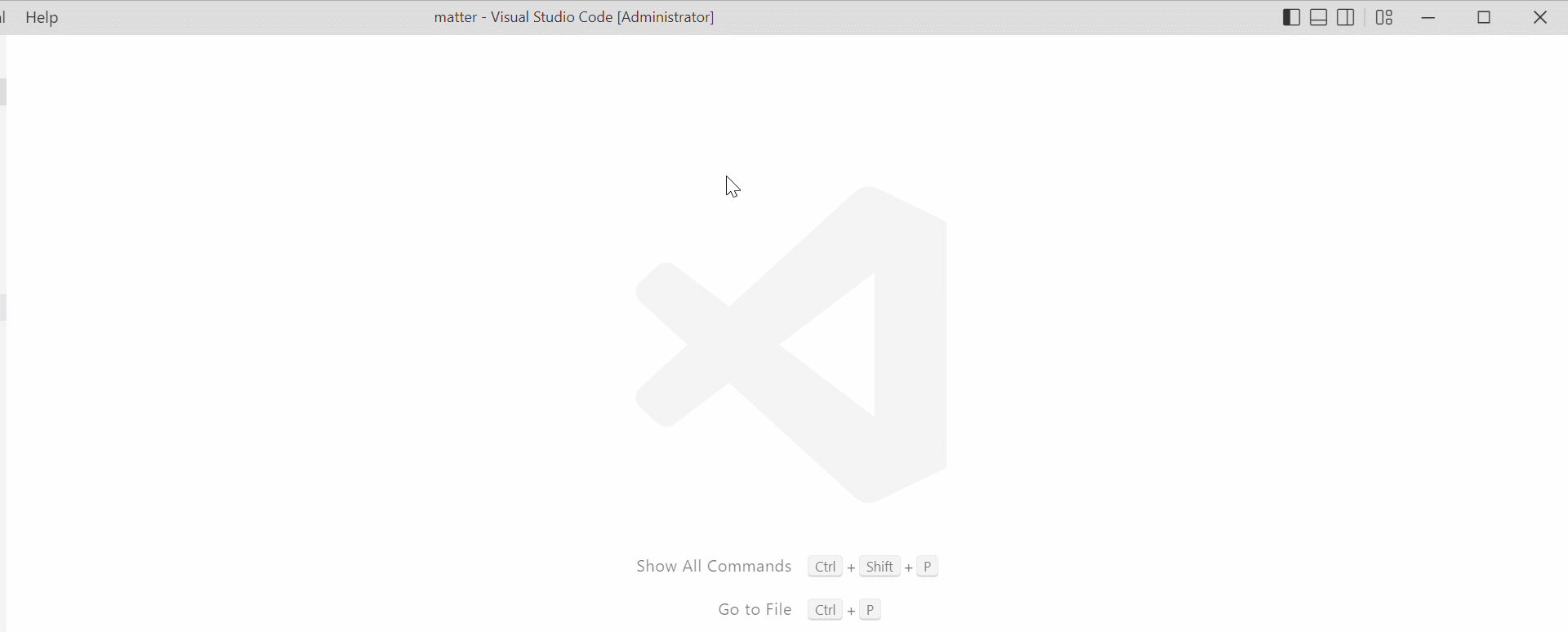Building in VS Code
This section covers building the binaries required for Flashing and Debugging the target Matter Accessory Devices.
Linux/Mac
Step 1:
Use the shortcut (Ctrl + Shift + P) to trigger the command pallet.
Step 2:
Search for “run build task” and select the “Run Build Task” option.
Step 3:
A new drop down menu will appear. Select “Build efr32 example”.
Step 4:
On the next menu select an EFR32 example to build.
Step 5:
Select the appropriate target board.

Windows
Building for Windows requires one extra step before running the build example task.
Step 1:
Press (Ctrl + Shift + P) to trigger the command pallet.
Step 2:
Search for “run build task” and select “Run build task” from the drop-down menu.
Step 3:
On the next menu, select “Windows setup” from the options.
Step 4:
The next menu contains two options, “setup” and “cleanup”. Select setup in order to initiate the setup process. This step installs crucial packages that are required to build the examples such as openssl. if openssl is not detected, an installation will be initiated in a new window. Follow the installation prompts in order for the setup to be successful. Select cleanup to clean up the environment after building the examples.
Step 5:
This step is identical to the steps for building on Linux/Mac, Refer to that section above.

Note for Windows Developers
During bootstrap, an error might occur. Check if pip.exe is installed in ./environment/gn_out/python-venv/Scripts. If it does not exist, install pip.exe in that directory and rebuild the example.